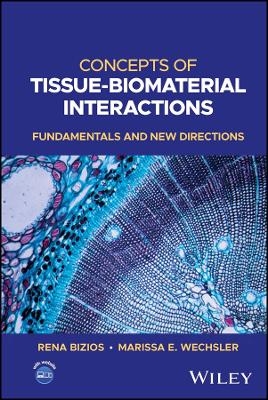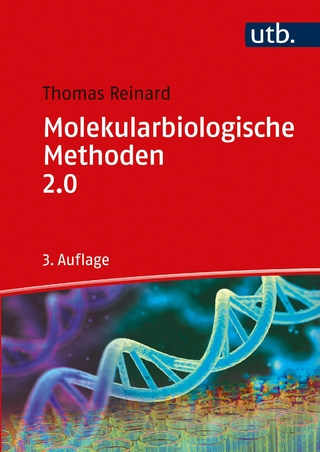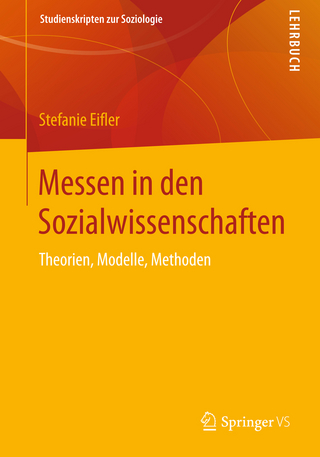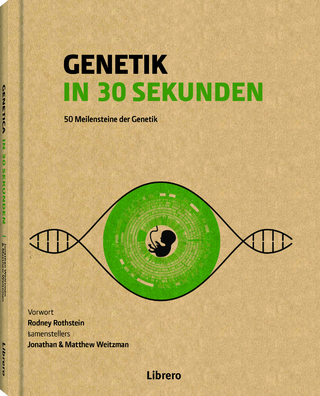
Concepts of Tissue-Biomaterial Interactions
John Wiley & Sons Inc (Verlag)
978-1-119-84100-5 (ISBN)
Biomedical engineering is an established interdisciplinary research and training area, combining various aspects of physiology, biology, materials science and engineering. Biomedical engineering programs and courses are integral parts of pertinent curricula, generating an urgent need for textbooks which can introduce this fundamental subject to new generations of students, researchers and practicing professionals.
The textbook Concepts of Tissue-Biomaterial Interactions meets this need with an introduction to the subject. Beginning with various, key, fundamental concepts of cellular biology and the physiology of tissue wound healing (required to understand interactions of tissues and implants) it offers essential information and insight regarding the design of successful biomaterial implants. Concluding with a look at the current forefront and future of the field, it is an indispensable introduction for fundamental and cutting-edge aspects of biomedical engineering applications.
Concepts of Tissue-Biomaterial Interactions readers will also find:
Introduction to biological aspects such as cell-extracellular matrix interactions and cell-substrate interactions
Details regarding various aspects of the process of normal tissue wound healing
Current knowledge of tissue wound healing in the presence of implants
Examples of pathological complications, including infection
Design criteria for biocompatible implants
The process of obtaining regulatory approval of new biomaterials and implantable medical devices by pertinent regulatory agencies
Implant biomaterial and medical devices: past, present, and future
Concepts of Tissue-Biomaterial Interactions is recommended for advanced undergraduate and for graduate students interested in biomedical engineering, biomaterials, tissue engineering, and implantable biomaterials/medical devices, as well as a reference for practicing biomedical engineering professionals.
Rena Bizios, PhD, is a Professor in the Department of Biomedical Engineering at the University of Texas at San Antonio, San Antonio, TX. She has over four decades of experience teaching undergraduate and graduate courses regarding tissue-biomaterials interactions and related biomedical engineering topics. Marissa E. Wechsler, PhD, is an Assistant Professor in the Department of Biomedical Engineering at the University of Texas at San Antonio, San Antonio, TX. Her research interests focus on various aspects of biomaterials, specifically at the polymer-protein interface with applications in biosensing and drug delivery. She has also developed, and teaches, courses on soft biomaterials and stem cell engineering at the undergraduate and graduate levels.
List of Figures xiii
List of Tables xv
Preface xvii
Acknowledgments xix
About the Companion Website xxi
1 Materials for Prosthetic Devices and Implants Through the Ages 1
1.1 Traditional External Prosthetic Devices 2
1.2 Implantable Devices 3
1.3 Materials Used for Implants 4
References 5
2 Lessons Learned from Physiology 9
2.1 Tissue Wound Healing: Introduction 9
2.2 The Process of Normal Wound Healing in Injured Tissues 11
2.2.1 The Importance of Blood Supply in the Human Body 12
2.2.2 Blood Composition 12
2.2.3 Hematopoiesis (Formation of Blood Cells) 14
2.3 Blood Clotting (Thrombosis) 16
2.3.1 Platelet Anatomy 16
2.3.2 Platelet Function 16
2.3.3 Platelet Function in Hemostasis 17
2.3.4 The Plasma Coagulation Cascade 18
2.3.5 “Synergisms” in the Process of Thrombus Formation 21
2.3.6 The Fate of Thrombi 22
2.3.7 Control of Thrombosis 22
2.4 Fibrinolysis 22
2.5 Inflammation 23
2.5.1 Introduction 23
2.5.2 Inflammation in the Tissue Wound Healing Process 24
2.5.3 The Blood Cells of Inflammation 24
2.5.4 Leukocyte Response to Invading Pathogens 25
2.5.5 Neutrophil Response to Invading Pathogens 25
2.5.6 Monocyte/Macrophage Response to Invading Pathogens 28
2.6 The Proliferation/Repair Stage of the Tissue Wound Healing Process 29
2.6.1 Cytokines and Growth Factors 29
2.6.2 Tissue Regeneration 30
2.6.3 The Proliferative Capacity of Human Cells 30
2.6.3.1 An Introduction to Stem Cells 31
2.6.4 Synthesis and Deposition of New Extracellular Matrix Components 35
2.6.5 Formation of New Blood Vessels 37
2.6.6 Restoration of Nerves 38
2.7 Remodeling/Maturation Stage of the Tissue Wound Healing Process 38
References 39
3 Lessons Learned from Pathology 43
3.1 Blood-Coagulation-Related Clinical Complications 43
3.2 Prevention of Blood Clots: A Clinical Perspective 44
3.3 Fibrinolysis: Clinical Practice 45
3.4 Inflammation-Related Pathological Outcomes 45
3.5 Proliferation/Repair and Remodeling/Maturation-Related Pathological Outcomes 46
3.5.1 The Skin Wound Healing Process 46
3.5.2 Undesirable Skin Wound Healing Outcomes: Scars 47
3.5.3 Scarless Wound Healing During Early Gestation of the Fetus: A Special Case 48
3.5.4 Parameters Affecting Scarless Wound Healing 48
3.5.5 Closing Remarks 49
3.6 Other Undesirable Tissue Wound Healing Outcomes 50
3.7 Potential Lessons Learned from Malignant Tumor Pathology 51
3.8 Cancer and Implants 52
3.9 The Patient Factor 52
References 53
4 Lessons Learned from Biology 55
4.1 Mammalian Cells 55
4.1.1 Cell Functions 55
4.2 The Extracellular Matrix 56
4.3 Brief Introduction to Proteins 57
4.4 Protein Adsorption on Substrates 59
4.5 Protein Interactions with Substrates: The “Substrate Prospective” 60
4.6 Adsorption of Proteins from Multicomponent Solutions. The Vroman Effect 60
4.7 Protein-Mediated Cell Interactions with Substrates 61
4.8 Protein and Cell Interactions with Materials: Applications 62
4.9 Select Chemical Modification of Substrate Surfaces 62
4.9.1 Directed Mammalian Cell Adhesion on Chemically-Modified, Protein-Containing, Patterned Surfaces 62
4.10 Select Mammalian Cell Adhesion on Chemically-modified, Peptide-Containing, Material Surfaces 64
4.11 Other Mammalian Cell Functions on Chemically-Modified, Peptide-Containing Material Surfaces 65
4.12 Closing Remarks 66
4.13 Protein and Cell Interactions with Nanostructured Materials 67
4.13.1 Challenges Regarding Implantable Nanostructured Materials 70
4.13.2 Closing Remarks 71
References 72
5 Tissue Wound Healing in the Presence of Implants 75
5.1 Introduction 75
5.2 Blood Coagulation and Fibrinolysis in the Presence of Implants 76
5.3 Inflammation in the Presence of Implants 78
5.4 Proliferation/Repair and Remodeling/Maturation in the Presence of Implants 80
5.4.1 Chronic Nonhealing Wounds 80
5.4.2 Clinical Complications Regarding Vascular Grafts 81
5.4.3 Closing Remarks 83
5.5 Effects of the Biological/Physiological Milieu on Biomaterials 83
5.6 The Fate of Implants 84
References 86
6 Infection 89
6.1 Introduction 89
6.1.1 Introduction to Biofilms 90
6.1.2 The Process of Biofilm Formation 90
6.2 Clinical Treatments of Infection 92
6.2.1 Medical Treatments of Infection 93
6.2.2 Infections Associated with Implants 94
6.2.3 Implant Material Properties Contributing to Infection 95
6.2.4 Potential Strategies to Overcome Implant-Associated Infections 96
6.2.5 Current Research Endeavors to Overcome Bacterial Infections of Implanted Devices 96
6.3 Future Directions: Challenges and Opportunities 97
References 97
7 Sterile Conditions. Sterilization of Implants 99
7.1 Introduction 99
7.2 Determining Implant-Related Sterile Conditions 100
7.3 Methods for Implant Sterilization 102
7.3.1 Autoclaving or Steam Sterilization 102
7.3.2 Ethylene Oxide (EtO/EO) Sterilization 103
7.3.3 Sterilization Using Emitted Radiation 105
7.3.4 Development of New Sterilization Methods 106
7.4 Biomaterials: The Biomedical Engineering Connection 106
7.4.1 Sterile Conditions and Practices in Surgery Rooms and Hospitals 106
References 107
8 Evaluation of Biocompatibility 109
8.1 Mechanical Properties of Materials 110
8.1.1 Mechanical Tests In Vitro 110
8.1.2 Material Tests In Vitro. Determination of Material Degradation 111
8.2 In Vitro Hemocompatibility (Blood Compatibility) Tests 113
8.2.1 Hemocompatibility-Related Tests 113
8.2.2 Tests Under Static and Dynamic Conditions 115
8.3 Cultured Cell Models 115
8.3.1 Determination of Protein Interactions on Synthetic Materials 116
8.3.2 Determination of Cultured Cell Interactions with Proteins Pre-adsorbed on Synthetic Materials 117
8.3.3 Cultured Cell Models: Closing Remarks 118
8.4 Animal Tests 119
8.4.1 Regulations and Laws Regarding Animals in Research 120
8.4.2 Special Considerations Regarding Animals Used in Research 124
8.4.3 Nonfunctional, Ex Vivo, and Functional Tests 125
8.4.4 Closing Remarks 127
8.5 Clinical Trials 127
8.5.1 An Introduction to the Food and Drug Administration (FDA) of the United States (US) 128
8.5.2 Requirements for Clinical Trial Applications 129
8.5.3 Patient Participation in Clinical Trials 130
8.5.4 Phases of Clinical Trials 130
8.5.5 Requirements for Successful Clinical Trials 131
8.5.6 Undesirable Outcomes 131
8.5.7 Closing Remarks 132
References 132
9 Lessons Learned from Implant Failure, Retrieval, and Evaluation 135
9.1 Complications Leading to Implant Failure Post Implantation 135
9.2 Examples of Vascular Implant Failure Post Implantation 136
9.3 Reasons for Failure of Orthopedic and Dental Implants Post Implantation 138
9.4 Examples of Orthopedic and Dental Implant Failure Post Implantation 139
9.5 Etiology of Implant Failure Post Implantation 141
9.6 Evaluation of Retrieved Failed Implants. Responsibilities of Biomedical Engineers 141
9.7 Closing Remarks 142
Reference 142
10 Hydrogels: Promising, Versatile Biomaterials for Implants 143
10.1 Introduction 143
10.1.1 Hydrogel Fundamentals 143
10.1.2 Hydrogel Structure and Network Characterization 144
10.1.3 Equilibrium Swelling Theory 144
10.1.4 Solute Diffusion from Hydrogels 147
10.1.5 Hydrogel Types and Applications 148
10.1.5.1 Microscale Hydrogels 148
10.1.5.2 Nanoscale Hydrogels 149
10.1.5.3 Stimuli-Responsive Hydrogels 149
10.1.5.4 Responsive Hydrogels in Tissue Engineering 150
10.1.6 Development of Three-Dimensional Scaffolds with Fine-Tuned Chemistry, Porosity, and Mechanical Properties 150
10.1.7 Growth Factor Retention, Sequestration, and Delivery 151
References 152
11 Biocompatibility: Past, Present, and Future 157
References 158
Index 159
| Erscheinungsdatum | 05.04.2024 |
|---|---|
| Verlagsort | New York |
| Sprache | englisch |
| Themenwelt | Naturwissenschaften ► Biologie ► Genetik / Molekularbiologie |
| Technik ► Umwelttechnik / Biotechnologie | |
| ISBN-10 | 1-119-84100-3 / 1119841003 |
| ISBN-13 | 978-1-119-84100-5 / 9781119841005 |
| Zustand | Neuware |
| Haben Sie eine Frage zum Produkt? |
aus dem Bereich


